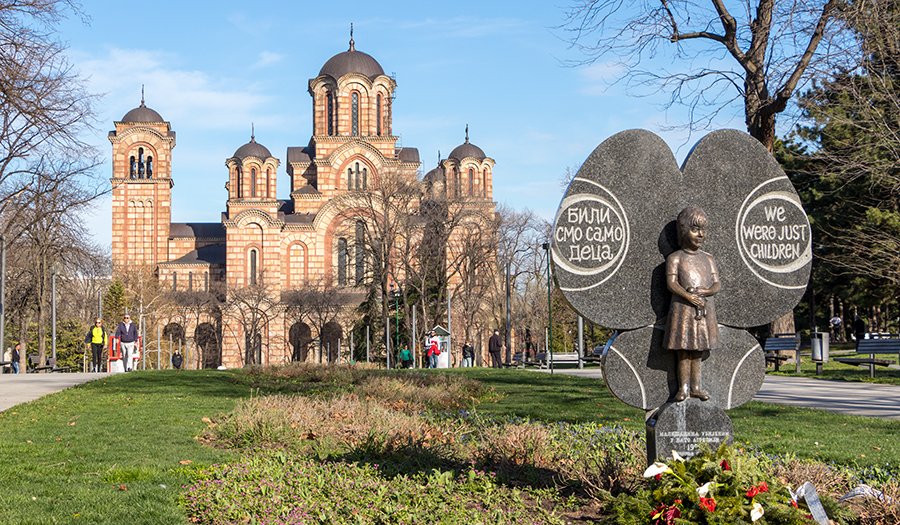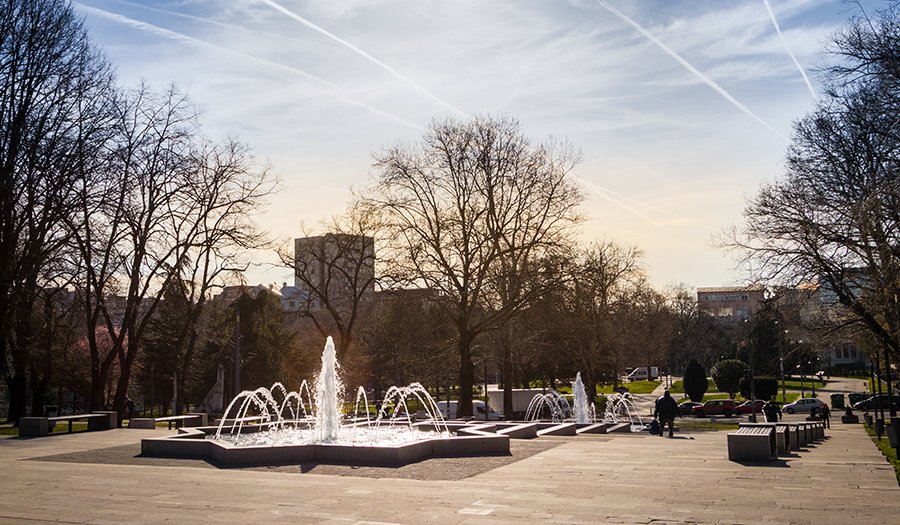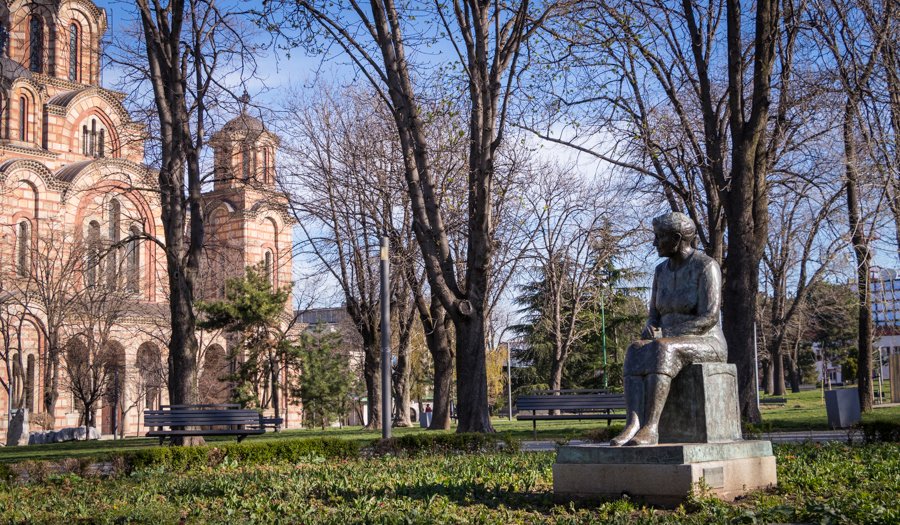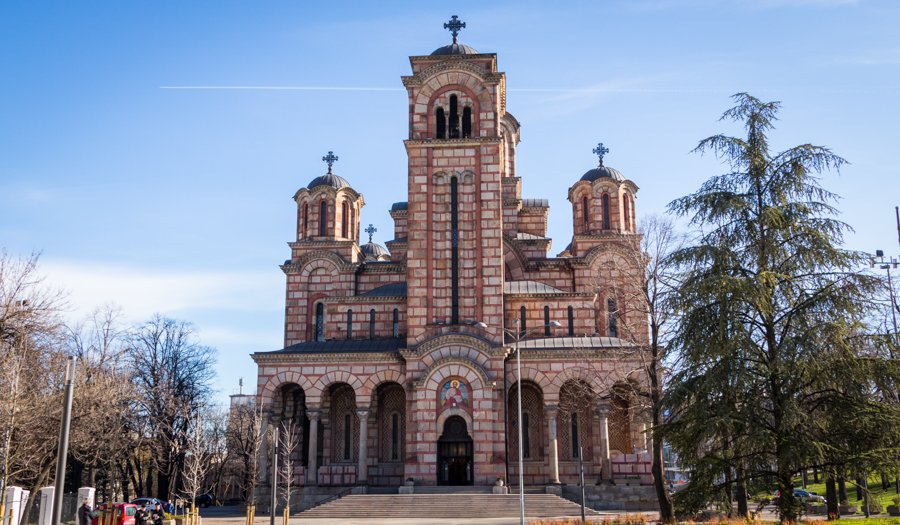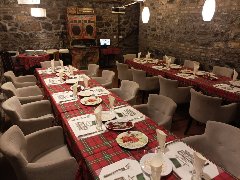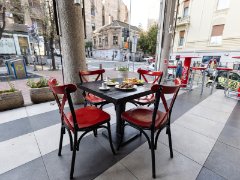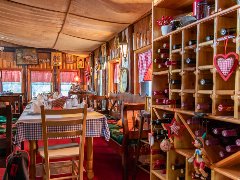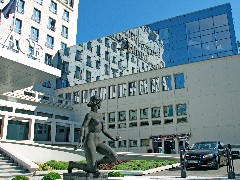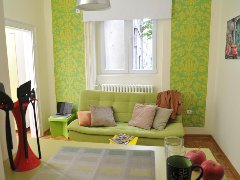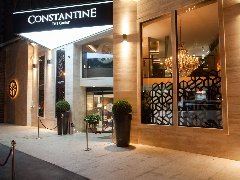Tasmajdan where many historical events took place is the central city park, beautifully decorated with many amenities for children and young people. Tasmajdan name comes from Turkish word "Tas" - meaning stone and word "Quarry" - meaning mine. Stone had been dug here since the ancient times. The evidence for that are the sarcophags of the Romans inhabitants of the town, who inhabited area 2000 years ago.
The Tasmajdan park was built in 1954. The project for the park was created by architect Aleksandar Djordjevic and Radomir Stupar, a greening plan has made an engineer Vladeta Djordjevic. Area of the Tasmajdan park was also used for the exhibition of sculptures and after many of them were kept there. So today in the park are works such as "Ascender" by Mira Sandic; "The Slide" by sculptor Sava Sandic; "Phlox forma" work of Milija Glisic, "Golden Forest" work of Mira Jurisic, "Lying act" by Angelina Gatalica; "Associative figure" and "Woman sitting" by Ivana Sabolic and "Housing" by Ratko Vulanovic. "Don Quixote" by sculptor John Soldatovic has been set at the beginning of the nineties. "Desanka Maksimovic" monument, the work of Svetlana Karovic - Deranic was revealed 2007.
Tasmajdan caves, recently opened to the public have been hiding history of Belgrade from 2000 years ago till present day. During World War II they were used as bomb shelters and as one of the first modern underground shelters in Belgrade. Today it represents monument to the past times and sumptuous area of the city.
At the Tasmajdan park and around it there are the Church of Saint Marko (new, built in 1931-1936), the Russian Church (1924), General Post Office (1934), hotels "Tash" and "Metropol Palace", "Madera" restaurant, Radio-Television of Serbia, the Seismological Station, children's amusement park.
Tasmajdan where many historical events took place is the central city park, beautifully decorated with many amenities for children and young people. Tasmajdan name comes from Turkish word "Tas" - meaning stone and word "Quarry" - meaning mine. Stone had been dug here since the ancient times. The evidence for that are the sarcophags of the Romans inhabitants of the town, who inhabited area 2000 years ago.
The Tasmajdan park was built in 1954. The project for the park was created by architect Aleksandar Djordjevic and Radomir Stupar, a greening plan has made an engineer Vladeta Djordjevic. Area of the Tasmajdan park was also used for the exhibition of sculptures and after many of them were kept there. So today in the park are works such as "Ascender" by Mira Sandic; "The Slide" by sculptor Sava Sandic; "Phlox forma" work of Milija Glisic, "Golden Forest" work of Mira Jurisic, "Lying act" by Angelina Gatalica; "Associative figure" and "Woman sitting" by Ivana Sabolic and "Housing" by Ratko Vulanovic. "Don Quixote" by sculptor John Soldatovic has been set at the beginning of the nineties. "Desanka Maksimovic" monument, the work of Svetlana Karovic - Deranic was revealed 2007.
Tasmajdan caves, recently opened to the public have been hiding history of Belgrade from 2000 years ago till present day. During World War II they were used as bomb shelters and as one of the first modern underground shelters in Belgrade. Today it represents monument to the past times and sumptuous area of the city.
At the Tasmajdan park and around it there are the Church of Saint Marko (new, built in 1931-1936), the Russian Church (1924), General Post Office (1934), hotels "Tash" and "Metropol Palace", "Madera" restaurant, Radio-Television of Serbia, the Seismological Station, children's amusement park.
